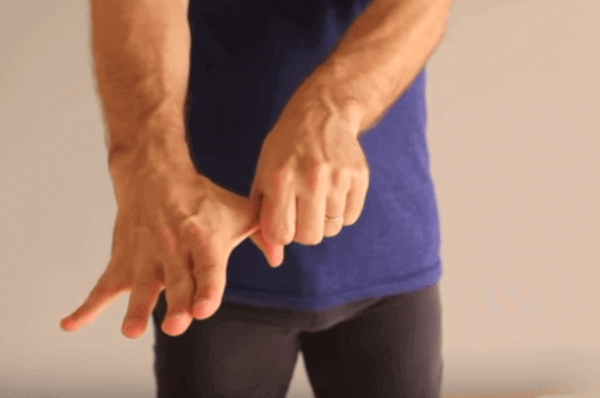How to Perform Effective Carpal Tunnel Stretches
Ease hand or finger pain and numbness with 4 simple carpal tunnel stretches. In less than a minute, you can loosen tight tendons, improve blood flow, and protect your hands from carpal tunnel syndrome — all with easy, doctor-recommended exercises.
Table of Contents
- Introduction
- Why carpal tunnel stretches are so important
- How often should you stretch?
- Finger stretch
- Hand and wrist stretch
- Thumb stretch
- Forearm stretch
- Summary
- FAQs
- About
Introduction
If your hands feel stiff, tingly, or weak, these simple carpal tunnel stretches can make a big difference. In just 30 seconds, you can ease wrist pain, improve circulation, and prevent carpal tunnel syndrome from getting worse. These four core stretches target the fingers, wrists, thumbs, and forearms — exactly where tension builds up most. Follow this quick guide to restore comfort and flexibility to your hands, naturally and safely.
Why carpal tunnel stretches are so important
If you spend hours typing, gripping tools, or using your hands repetitively, carpal tunnel stretches can be a game changer. These simple movements help prevent carpal tunnel syndrome and relieve existing
symptoms like pain, tingling, and hand numbness.
The four core carpal tunnel stretches below are the foundation of an effective hand and wrist care routine. They work by:
- Loosening tight tissues and reducing adhesions around tendons.
- Boosting blood flow around the wrist joint.
- Encouraging natural fluid drainage to reduce swelling.
When tendons glide smoothly, finger and wrist motion becomes easier — and pain starts to fade. That’s why these carpal tunnel exercises are an essential part of both
prevention and recovery.
How often should you stretch?
Perform one set of each stretch every
1–2 hours — or more often if your hands are under stress. After each exercise, let your arms fall to your sides and shake your hands out for a few seconds.
You should feel a gentle warmth in your fingers and palms — that means
blood is flowing freely and healing has begun.
1. Finger stretch
2. Hand and wrist stretch
3. Thumb stretch
4. Forearm stretch
The 30-30 Rule: Stretch smarter, not harder
To keep your wrists healthy, follow the 30-30 rule:
👉 Do one full round of all four carpal tunnel stretches (about 30 seconds total) every 30 minutes of hand activity.
It might sound frequent, but it quickly becomes second nature — and the benefits are incredible. Regular stretching can help you:
- Prevent carpal tunnel syndrome from developing.
- Reduce wrist pain, numbness, and tingling.
- Improve flexibility and tendon health.
If your symptoms are mild, these stretches alone may bring complete relief. But if your condition is
severe or persistent, combine these exercises with CarpalRx therapy for faster and longer-lasting results.
Summary
Make these
carpal tunnel stretches
part of your everyday life. Regularly moving your fingers, wrists, and forearms keeps blood flowing and tendons flexible — which helps your hands stay strong and pain-free.
Follow the 30-30 rule, stay consistent, and give your wrists the care they deserve. A few seconds of stretching throughout the day can prevent months — or even years — of discomfort.
FAQs
1. How often should I do carpal tunnel stretches?
You should perform carpal tunnel stretches several times a day — ideally every 30 minutes of hand activity. This keeps blood flowing, prevents stiffness, and helps reduce pressure on the median nerve before symptoms worsen.
2. Can stretching alone cure carpal tunnel syndrome?
Stretching can greatly reduce symptoms, especially in mild cases, by loosening tendons and improving circulation. However, for moderate or severe carpal tunnel syndrome, stretches work best when combined with professional therapy, such as CarpalRx treatments, for faster recovery.
3. When should I stop doing carpal tunnel stretches?
If you experience sharp pain, swelling, or tingling that worsens after stretching, stop immediately and rest your hands. Resume gently after a few hours, or consult your healthcare provider if discomfort persists — especially if you suspect advanced carpal tunnel syndrome.
About






